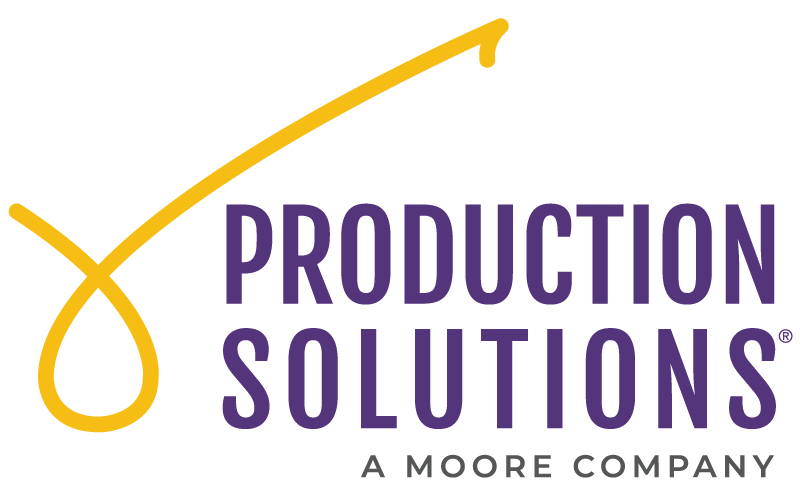Achieving Personal and Organizational Goals Through Coaching Leadership

Carolyn Angelini
Vice President of Resource and Postal AffairsWhen asked about my proudest achievement at Production Solutions, I say it’s being a strong Coaching Leader. When I joined the company eight years ago, I brought extensive industry knowledge and traditional management skills, but I’ve intentionally focused on refining my leadership approach. This deliberate development has transformed how I view my role — shifting from traditional management to a coaching-centered leadership style that emphasizes both individual growth and organizational success.
At PS, we value our company culture, and growing people is part of our ethos. While leadership sets the culture vision, people managers have a significant impact through daily interactions, one-on-ones, workgroups, and project discussions. It’s in this space where you’ll hear me refer to myself as a Coaching Leader and not the Director of my department.
When asked what my position is, my response is, “I support the Resource Team as our Coaching Leader.” I play multiple roles in this capacity, ensuring the team achieves goals and objectives for the company’s health and success.
How I measure myself as an effective leader is based not only on achieving company goals but also on supporting my team’s professional development. This strategy makes the most of each opportunity, based on achieving company goals and supporting my team to develop professionally. This strategy makes the most of each opportunity, simultaneously accomplishing both objectives.

Establish ‘Ways of Working’ for your team – One of my favorite phrases is “Clarity is Kindness.” I work to identify and address conflict areas, clarify ownership and deliverables, and spot exceptions and gaps in professional relationships, communications, and processes. Evaluate your team to see how you can improve clarity in interactions and expectations. The purpose of this approach is to build trust within the team by establishing consistent practices.
An example of ‘Ways of Working’ includes establishing team protocols for communicating when someone cannot attend a meeting, deciding whether meeting agendas are necessary, and determining who will take notes—whether it’s the Coaching Leader, Project Lead, or the best note taker on the team.
You might think these details are insignificant; however, efficiency, trust, and clarity are essential to effective team collaboration. Even the smallest details can slow down a team. Having standards for taking notes during meetings, determining the next steps or actions required, etc., helps your team be just as efficient when you’re unavailable.
More importantly, you’re building a team that’s just as good without you as they can be with you. This empowers your team to step into many situations, representing you and the department within the standards or capabilities you set forth and having respect from the entire organization. Plus, it’s a great feeling to know that you can go on vacation and the wheels won’t fall off the cart.
Be an Active Listener – When someone is speaking, don’t respond with what you THINK but with what you HEARD. When people feel heard, it increases their trust level. When people feel like they were lectured, it works against what you’re trying to build. I want my team to trust me and each other as much as I trust them. Bonus points – Being an active listener is a life skill we can practice at home, with friends, the grocery store clerk, etc.
Identify Superpowers and Weaknesses – Everyone has talents and areas where they excel, as well as areas where they may not be as strong. Think of these as an individual’s superpowers and weaknesses. Some skills come naturally or are well-developed in one person. In contrast, another person may not have the same natural ability or may not have invested time in developing that skill.
To get the most out of a team and individuals, identify opportunities to leverage the superpowers while challenging areas of weakness. If someone is good at putting together presentations, can they handle this for another teammate? In turn, can the other teammate flex their superpower muscles by proofreading the presentation? This example might not resonate with your team, but there are ways you can use this concept to encourage and support each individual and what they bring to the company.

Encourage Leveling Up – As a Coaching Leader, I’m pushing momentum upwards when I promote my team members to ‘glow up,’ flex their Superpower Muscles, and take advantage of opportunities to strengthen their weaknesses. If a team member leads a certain project or initiative extemporarily, I’ll often encourage them to pass the opportunity to someone else on the team and challenge them with a new project. In a supportive way, it shows I’m acknowledging their success while motivating them to ‘Level Up.’ We know you’re awesome at it…but what else can you show us?
Make Coaching Leadership Work for You
If you’re a “People Manager” and ready to try something new, start referring to yourself as Coaching Leader and get comfortable with how you feel saying it. If you’re like me, you’ll have a different sense of obligation to the people on your team than if you think of and refer to yourself as a manager. Start showing up with a shift in your intentions to support professional growth alongside delivering the company’s goals. You can do so seamlessly using some of the approaches I’ve shared. Before you know it, you’re building your own superpower as a Coaching Leader.
About the Author






